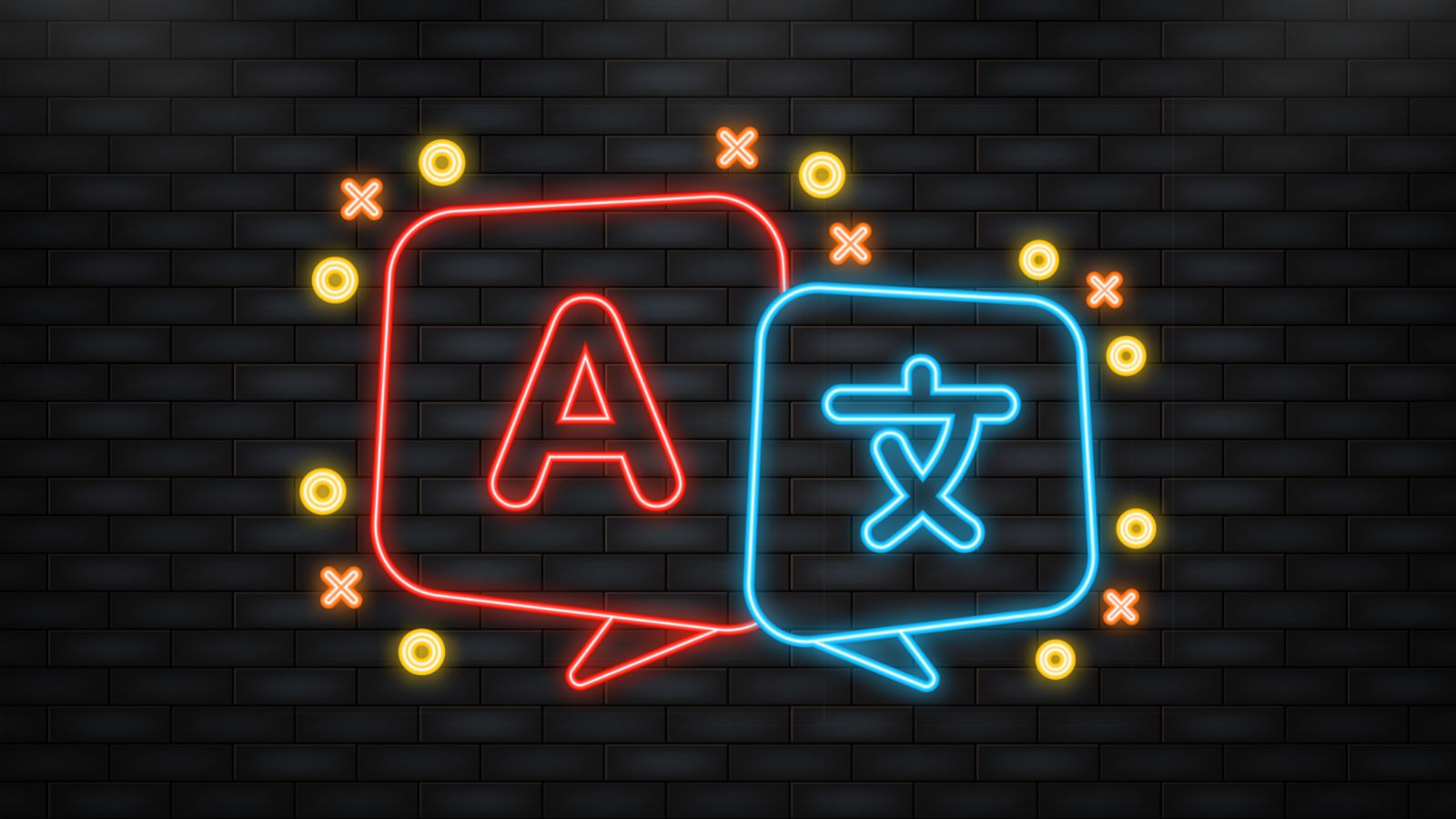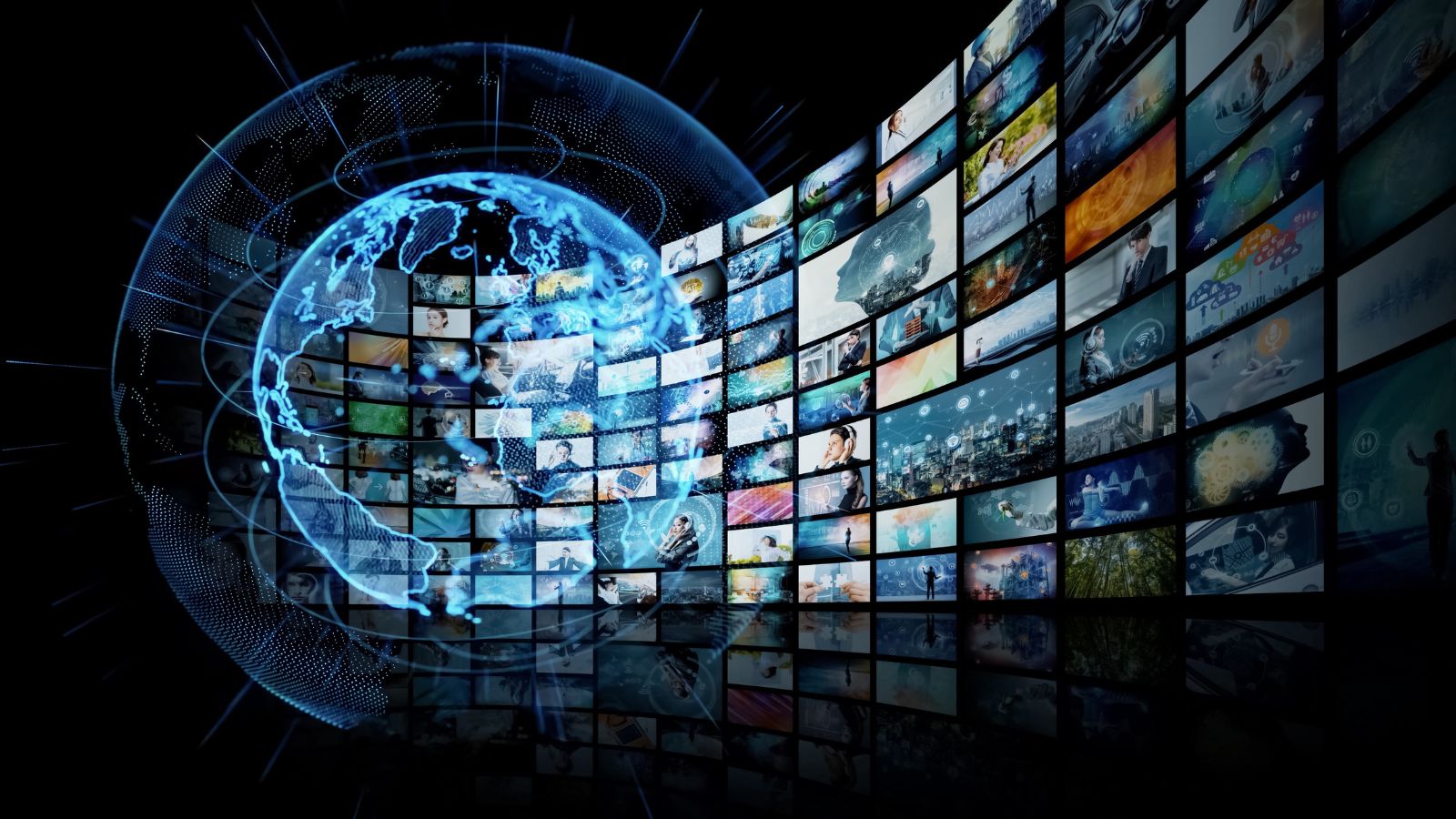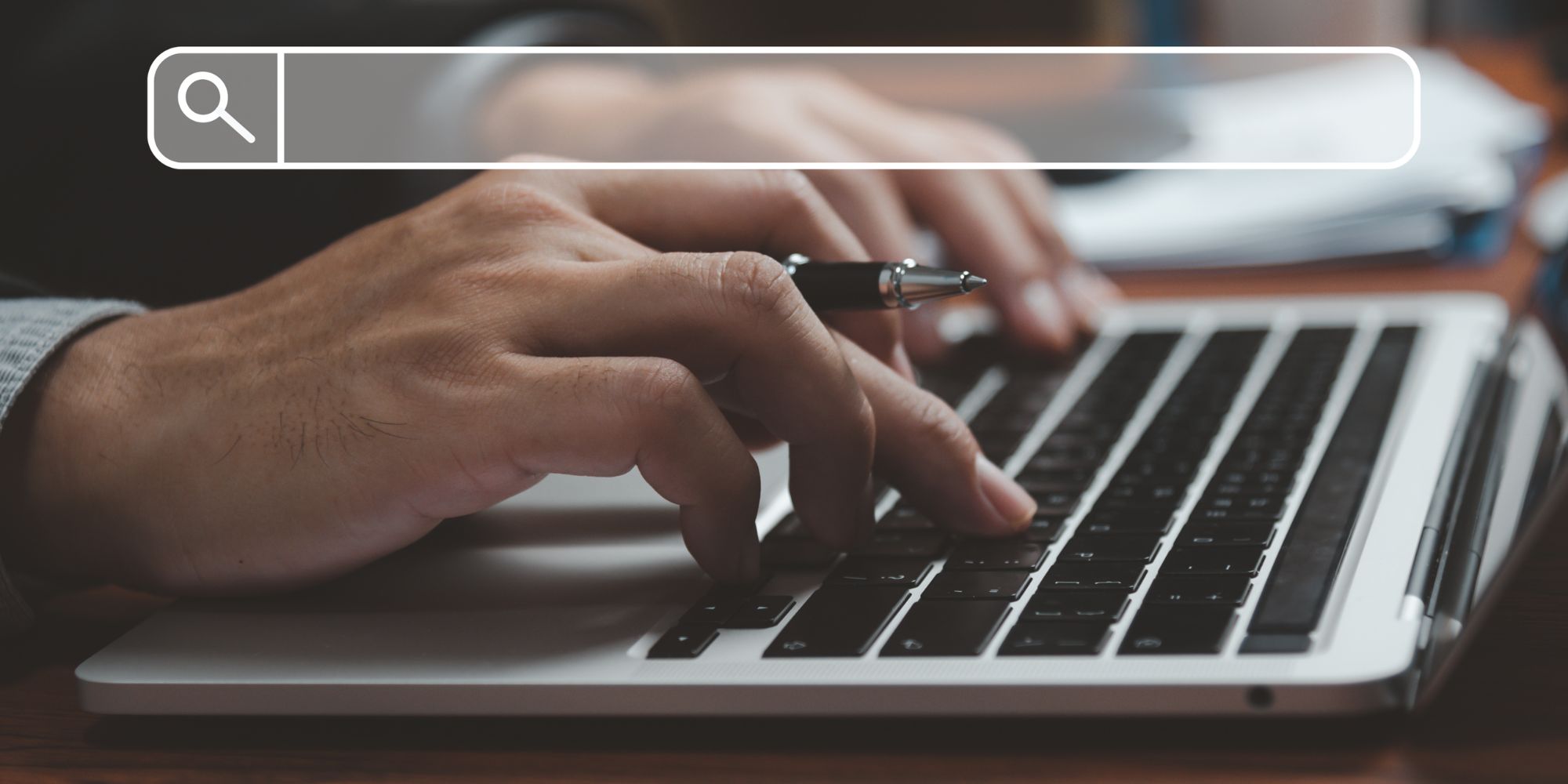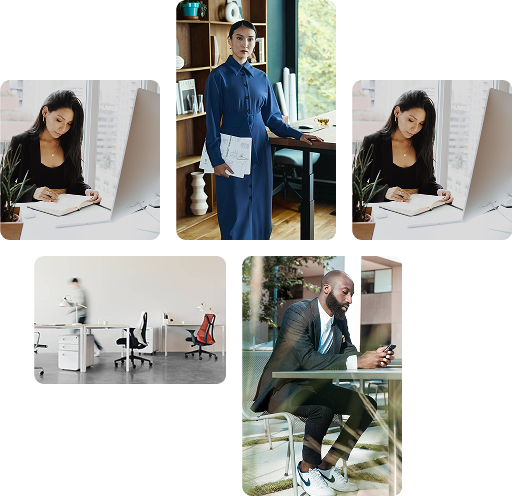Raffaele Pascale, Former Program Manager and LGBTQ+ Ambassador at Venga Global, An Argos Multilingual Company
Of the 130 languages most commonly spoken globally, 55% have gendered grammar. This means that the languages assign gendered pronouns and endings to the words themselves, for example; l’acqua (“water,” Italian feminine) vs. il libro (“book,” Italian masculine). For the 45% of languages that don’t have grammatical gender, many still adopt a masculine default to name objects and structure sentences.
Because our language and culture shape the way we see the world, grammar that divides the world into masculine and feminine affects how we see and can talk about gender. And since language echoes and reinforces social gender dynamics, this is a serious issue.
Gender-neutral language
Gender-neutral language, sometimes referred to as gender-inclusive language, neutralizes any references to social gender or sex. In English, this normally includes the use of nouns, roles, and professions. For example, terms like firefighter, police officer, and flight attendant are neutral alternatives to their respective gender-specific counterparts; fireman, policeman and stewardess.
Gender-specific language
On the other hand, for example, Eastern cultures tend to feminize the words and concepts associated with water, while Western cultures tend to masculinize or neutralize the words and concepts for water. In India, the River Ganges is well-known as a feminine sacred symbol. In the United States, songs depict the Mississippi River as an endless, uncaring flow and an “old man” that workers must struggle against.
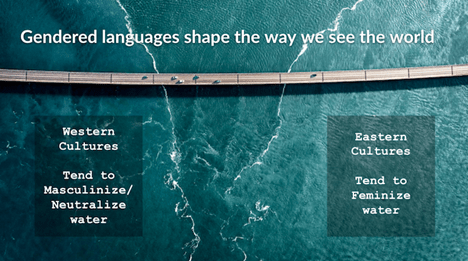
So how did Western languages—many of which are the dominant languages worldwide—become so masculinized? And what are the effects of having gender binaries so embedded in our languages?
[form_newsletter]
A quick history of gender bias and language
We’ll start with two historical facts. First, many of the written records of language that we have today have been written by men. Second, women have been erased from the record in cultures around the world for millennia. This wasn’t simply an accident: societies and those in power decided to keep women from having power, a profession, or education (in many cases), and devalued their contributions repeatedly.
So, when philosophers, poets, rulers, and scientists wrote about the world, they wrote themselves into the center of the story. We see the effects of this even now: in many languages, the default words for doctors, authors, teachers, lawyers, and more, are masculine–because for so long, the idea of having a female doctor was something societies didn’t allow.
Language has power, and in the past few decades we’ve begun to realize just how much language shapes our reality. Our languages carry the histories of generations of inequality.
Even though we’ve been discussing this topic for a long time, we also continue to use a masculine stylistic approach to translated texts. For example, the Microsoft style guide that many of us in the localization industry use still defaults to the masculine. So how can we make our translations more inclusive?
The movement towards inclusive language
Large companies are feeling the need to become more inclusive and driving a shift in business as they change their actions. Tech companies like Zoom, Slack, Eventbrite, and more have added diversity and inclusion (D&I) metrics to their language vendor selection and renewal processes. Clients of these big companies have started asking for inclusive adaptations of their past and current content.
Additionally, data collection analysts are working on creating more inclusive outputs in AI translation systems, so all genders are included. And interestingly, many schools are rewriting books to include inclusive language.
To help our clients become more inclusive, translators and localization professionals can take a variety of actions. At Argos, our clients have begun to ask us to help them be more diverse and create inclusive content. We offer situation-specific guidance and suggestions to each client we work with, but there are several key principles that stay the same. Here’s what we’ve learned so far about changing the way we think and creating gender-inclusive content.
First, identify the grammar structure of the languages you’re translating for a client. How many have a gendered structure, and how many are gender-neutral? Determine how many gendered languages impact the content.
Ideally, you can prioritize adapting content in gendered languages. Your translation team can target areas for inclusive translation: pronouns, articles, noun declensions, UI strings, email templates, references to the user, and more.
If you’re short on time, you can also prioritize the key areas where you most need to be inclusive. For example, web copy on a home page or a legal document addressed to a nonbinary person might be a higher priority for inclusivity than a single product description on an eCommerce site.
Then, don’t mistake neutrality for inclusivity. Gender-neutral languages will take less time to adapt, but still need to be reviewed for inclusivity–especially when it comes to translating professions and gender-oriented nouns. Translators can think creatively about how to describe words with gender built in. Words for an actor or an actress can easily be changed to a “movie star”; a fiancé or fiancée can be changed to “future spouse.”
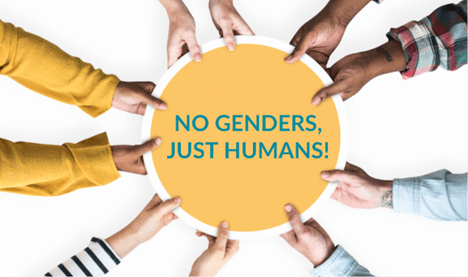
Making localization more inclusive: Human actions
If you are lucky, your leadership team understands the business relevance of diversity & inclusion. If your leaders are not there yet, you may need to educate your colleagues about how removing unconscious bias in language is relevant to their work and business goals.
The first step is realizing how your own unconscious biases operate in language. From there, you can use your experience to help your colleagues realize what biases are, how to recognize their own, and how to react.
Then, you can move beyond unconscious bias to make your behavior and language more inclusive. These changes are straightforward and efficient to make. For a simple example: does knowing the gender of water matter in your daily life? Would it matter if water was masculine, feminine, or neutral? The word’s gender doesn’t change anything about how you understand or use water.
Switching your language to an inclusive language takes only a little effort and doesn’t impact workflow, but it can make a world of difference to your clients and audiences.
Making localization more inclusive: Technical aspects
In terms of our localization processes and how we train managers, there are many ways to educate your colleagues about the importance of inclusive language and the ways that diversity and inclusion align with business goals.
Here are some additional ways to build diversity into your company:
- Help your sales teams reach existing and new clients with presentations/email templates about D&I
- Think about the visuals of your company as well as the text: Review your logos, websites and images to ensure they represent the diversity of your society
- Cooperate with your language leads to build a D&I style guide for each language your clients work with
- Focus on the neutral adaptation of the translations and adopt the latest D&I standards for each language
Italians and Germans are dropping the vowels from the ends of words to make their languages more gender-neutral. Spanish speakers are introducing completely new pronouns that apply to all genders, and French speakers are adding articles within nouns to include both genders. Though these changes are not official yet, common usage will help them enter the mainstream.
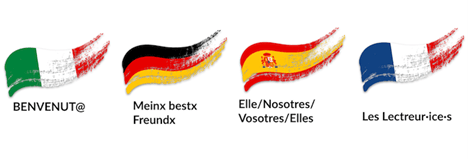
The localization industry can drive the change at this moment because we can make gender-inclusive language normal and train our clients to be more inclusive. We can incorporate inclusive language into key areas like HR, medicine, and more, making more people feel welcome in and welcomed by our language.
Argos’ vision
In all our work, Argos aims to make love understandable all around the world. There are no fixed rules for using inclusive language and advancing diversity, but there are core principles that help guide our judgment in each situation. Our guiding principle is to respect the human in front of us, recognize our shared humanity, and celebrate our differences.
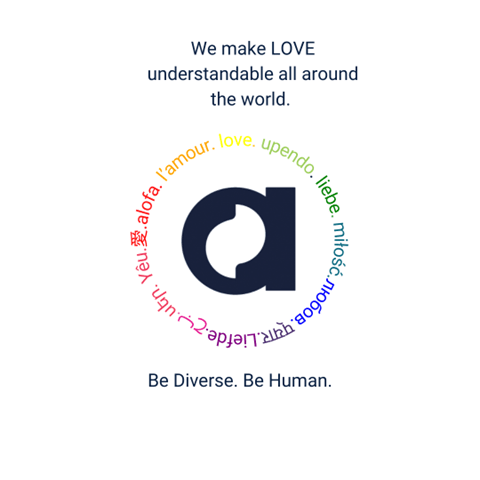
In our work, we strive to help our clients be diverse in all their materials while building an inclusive environment within our own company. We use creative approaches to language to create clear, inclusive content, and propose neutral, inclusive options during the translation and review processes.
And we recognize the responsibility and opportunity we have in this moment to lead the way in making inclusive language part of our everyday vocabulary. We’re excited to keep learning and keep sharing what we learn!
If you’re looking for ways to make your language and web presence more inclusive, contact us to see how Argos can help you develop strategies for your specific industry.
 Argos Multilingual
5 min. read
Argos Multilingual
5 min. read
When technical writers create developer content — migration guides, product documentation, or software development kits — they might not even be aware of how many pitfalls await when it is sent for translation. But with clear communication about the content’s purpose, context, and the users’ needs, quality translation is well within reach. Below, we’ve collected […]
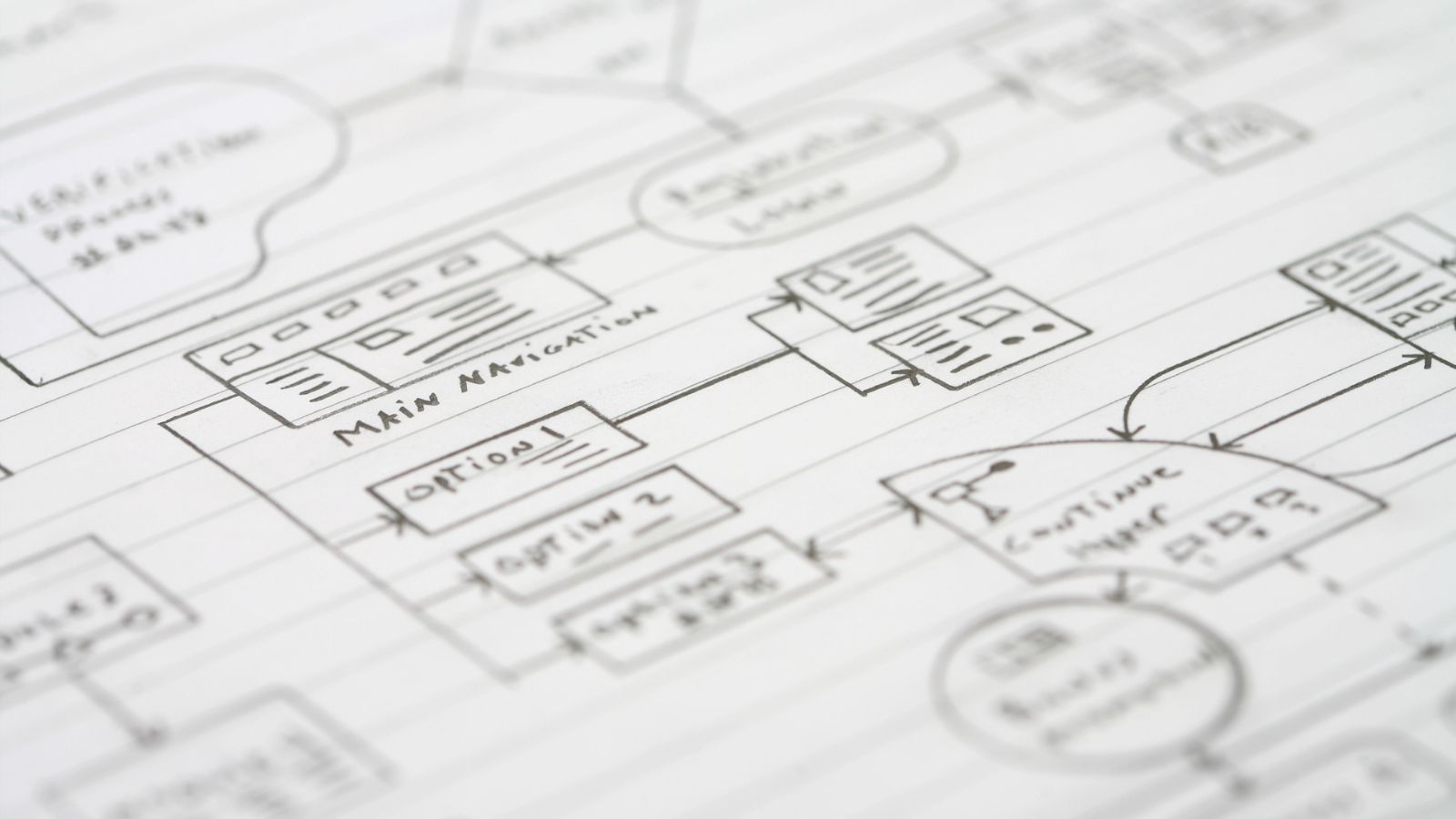
 Stephanie Harris
23 min. read
Stephanie Harris
23 min. read
Your website is often the first point of contact for potential customers. The statistics vary, but it is generally agreed that most users decide to leave or stay on a website within the first 10 to 30 seconds. Investing in website localization and having a multilingual user interface that makes it easy for new visitors […]
